Taming The Mighty Mach: Why ‘70s Kawa Triples Make For Ideal Custom Donors
Los Angeles, California, United States
While it was too powerful in 1976, times have a-changed, and so has motorcycle brake, suspension, and frame technology.
When Kawasaki released its air-cooled, two-stroke, half-liter triple in1968, it not only put Team Green back on the radar of the motorcycling public, but it also shook up the industry, setting a new standard for what it meant for a bike to be “powerful”, and forever changing the course of motorcycling history.
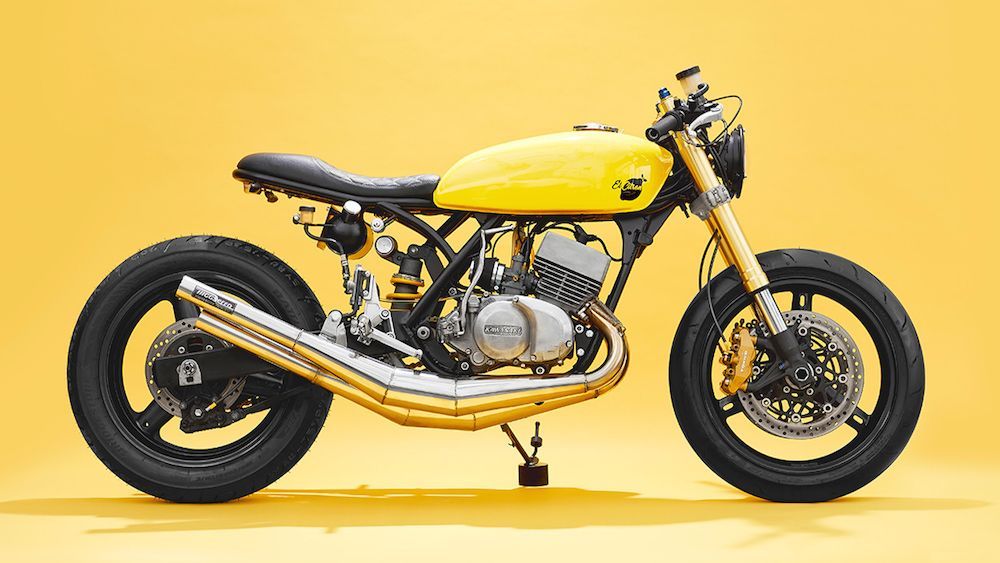
Motobrix' S3 400 complete with Brembo brakes and an inverted Gixxer front-end
Kawa’s engineers turned their noses at the trend of four-stroke development taking place at other manufacturers at the time, opting to focus their resources on two-stroke R&D, culminating in the 1967/68 release of the lineup’s inaugural model, the H1 Mach III 500. In a nutshell, the H1 was fast. Like, really, really fast. Keeping the front-wheel pinned to the tarmac was an active struggle, which could obviously become incredibly problematic when entering a corner. Nonetheless, the 500 sold quite well, prompting Kawasaki to expand its oil-burning range of triples to include the S2 350 in ’71, and the S1 250 in ‘72—the same year the company pulled the cover off what would become the most legendary machine in the platform.
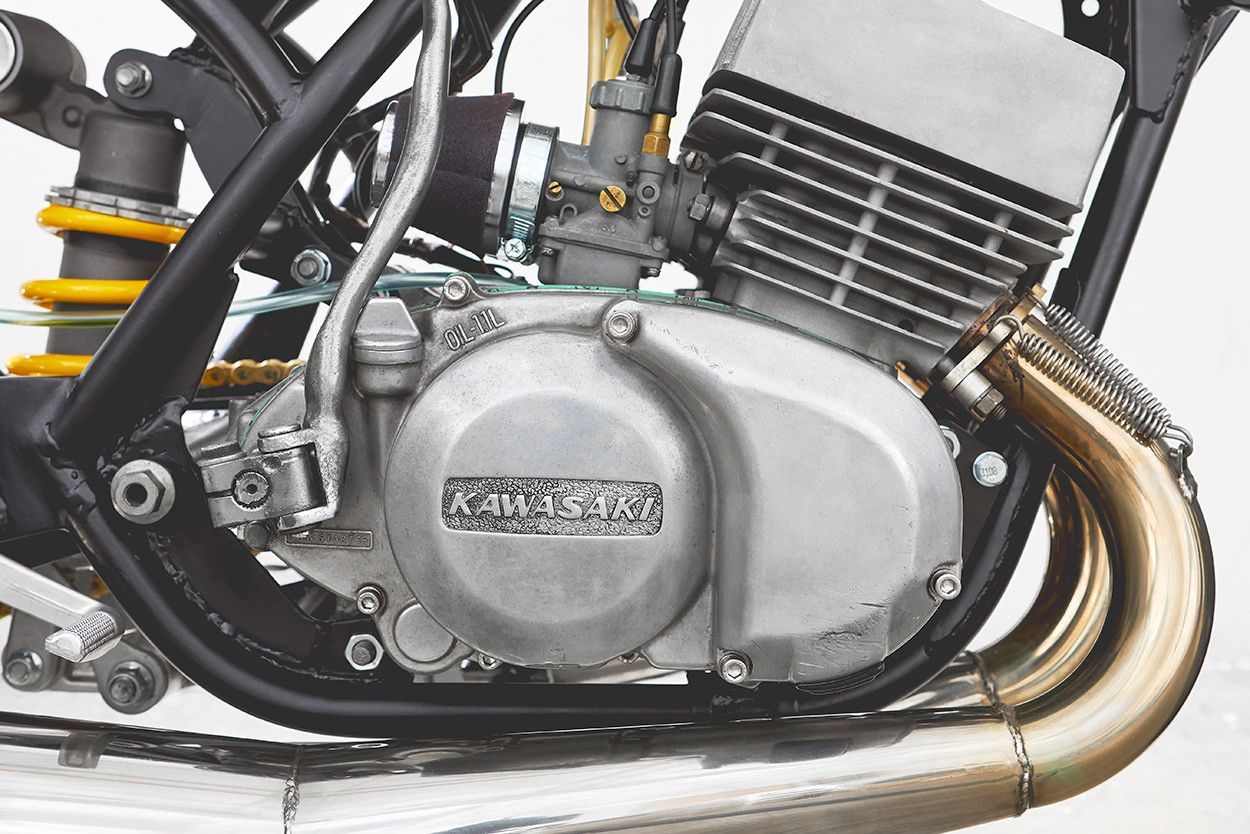
The heart, the mill, the legend: Kawasaki's 1970s Two-Stroke Triple
If there were concerns regarding the untamable power of the H1’s engine, they were raised exponentially with the release of the even more potent, H2 Mach IV 750. The three-quarter-liter triple was irresponsibly fast—so much so in fact that it inadvertently highlighted the shortcomings of the chassis, suspension, and braking hardware which failed to advance at the same rate as the three-banger. In less than a year’s time following the H2’s release, it earned the less-than-flattering nickname of “the widow-maker”—a blatant reference to the wildly fast bike’s frame and running gear being unable to compensate for the triple’s unparalleled grunt.

Kawasaki's legendary H2 Machi IV 750
Despite the obvious hazard of piloting the 750, sales remained adequate enough for Kawa to keep the Mach IV—as well as its smaller-displaced siblings—in production. Eventually, increasingly stringent emissions standards would force Kawasaki to pull the plug on its iconic two-stroke triple lineup, but the mighty Kawasaki triples of the 1970s had, by that time, obtained legendary status. 74hp at 6,800rpm might not sound impressive by today’s standards, but swing a leg over one—and we soooo urge you to do so if ever lucky enough to be offered the chance—and then come back and tell us what you think. Also bare in mind that today's 200hp bikes boast a bevy of electronic control aides that help to regulate power output, as where the Kawa triples from the '70s lacked traction control, ABS, wheelie control, or even disc brakes! The things were running drums!
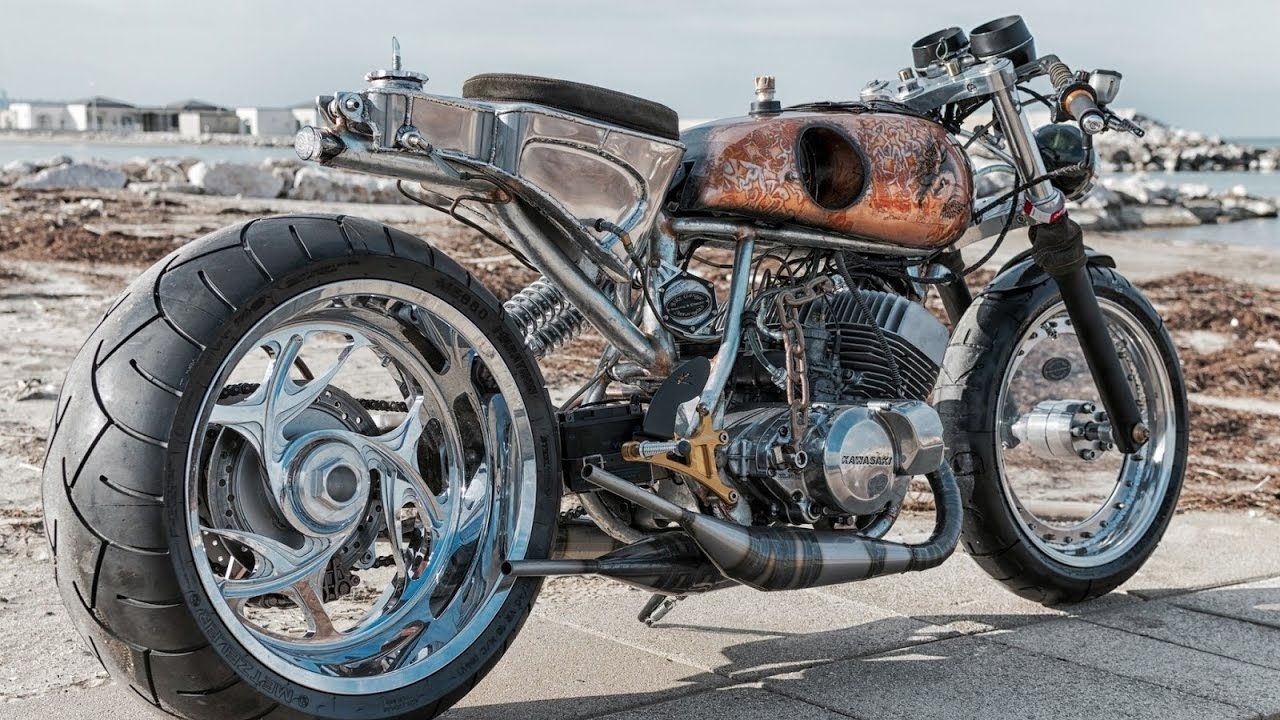
This unusual Kawa triple custom from Luigi Antenucci takes things in a different dirrection, though it almost certaintly handles better than when stock
Though it’s true that frame, suspension, and brake technology were a few years (if not decades) behind that of the engines leaving the Kawasaki factory in the ‘70s, said technology has since caught up to the mighty triples, and then some. Modern disc brakes and inverted front-ends and monoshocks can comfortably accommodate any two-stroke triple you can get your hands on. With modern running gear engineered to compensate for the latest 200hp+ models in dealerships today, holding down 74 ponies isn’t that tall of an order for a new set of Ohlins and Brembos. This means these bikes can finally be ridden safely, and enjoyed to their fullest extent, the way they were intended. Only better.

The "Kwikasfaki" name pretty much says it all...
So, if Kawasaki triples from the ‘70s make for such rad custom platforms, why don’t we see more of them? Well, the reason is three-fold. First off, as the bike’s unofficial moniker implies; a lot of examples were crashed as a result of the ridiculous pull offered on tap, lowering the number of existing examples available to become donors. Next, piggybacking off the first reason is the fact used examples are now worth a small fortune. It’s not uncommon to see used H2 examples go for around $20, and even new machines worth that amount are seldom hacked up for a custom job, even rarer are exorbitant classics put to a grinder. Lastly, and piggybacking once more, is the reason many in the motorcycling world feel there’s something objectively wrong with destroying an iconic vintage bike of mythical status, such as a ‘70s Kawa triple. Poke around on online forums and you’ll see the word “sacrilegious” used pretty frequently.

This awesome Kawa triple from Bavaria's TGS Motorcycles is another prime example of brining a Kawa 3-pot into the 21st century
While there are good reasons to opt for one of the countless other donor options, a handful of builders have ignored the moto-social-norm and have used one of these classic three-pots as the basis for custom builds. The most recent example of such a builder—not to mention the catalyst of this article being penned—is Brian Kates of Motobrix, a Toronto-based customs outfit that’s been in operation since 2014. Kates turned his attention to an abused 1974 S3 Mach II 400.
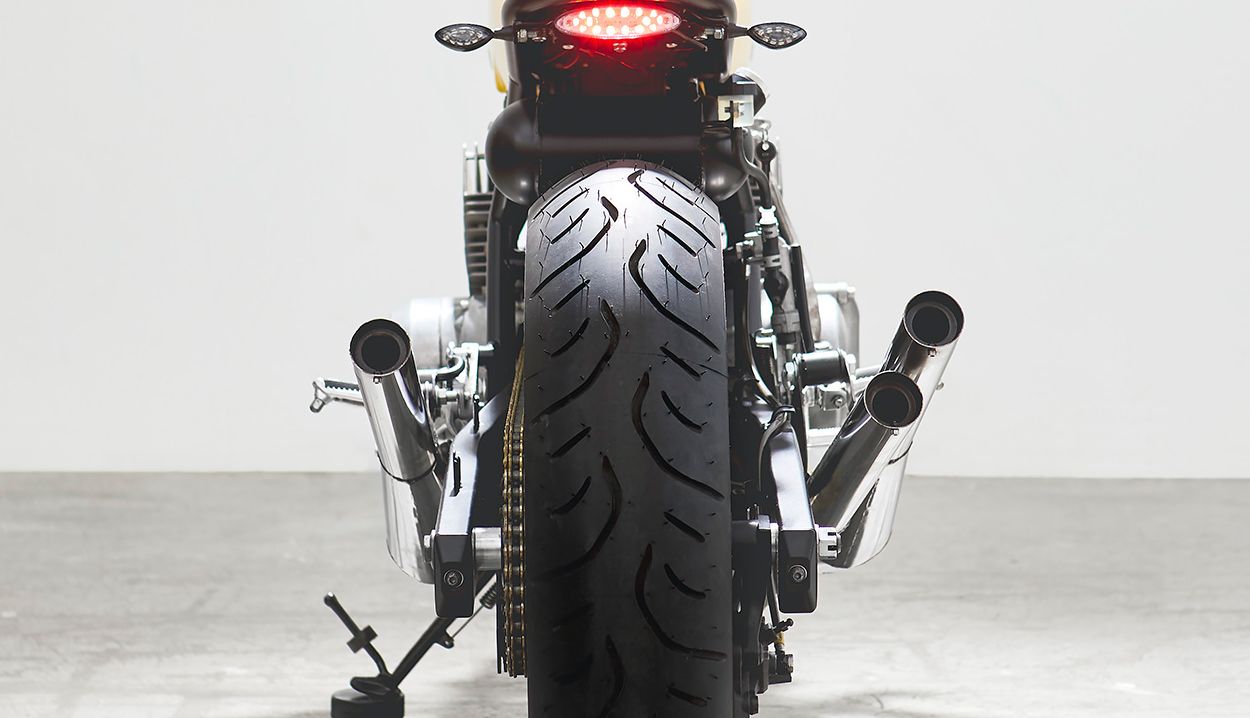
For us; it doesn't get more '70s Kawa triple than the off-set pipes
Kates’ S3 was not only given the modern café treatment, but the build also saw the 42hp lump fully broken down and overhauled before being dropped back into the factory chassis. Most importantly, Motobrix’ 400 was equipped with contemporary components borrowed off a myriad of late-model Suzuki’s, including various GSX-R models and an SV650. The custom oil-tank under the seat is a stellar touch, and the minimalistic seat and one-off subframe pair wonderfully with the Mach II’s stock fuel-cell.
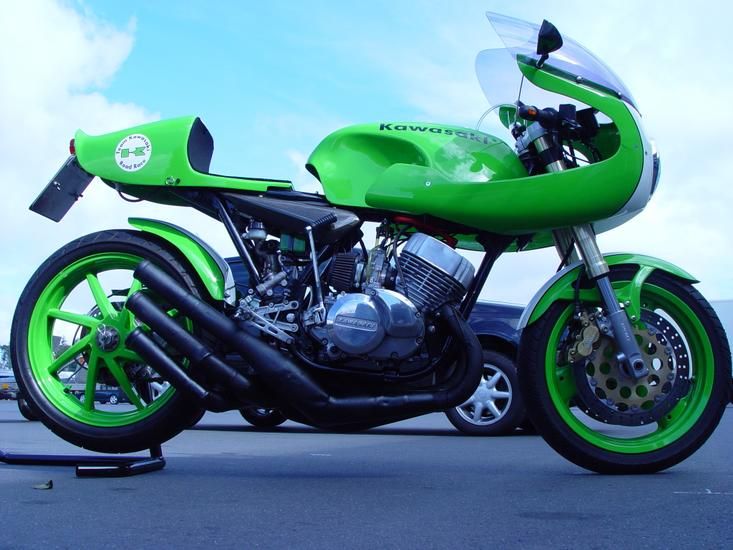
Between the mono-shocked single-sided swing-arm, race bodywork and upside down forks, we'd say this Kawa triple custom is spot on
“I wanted to turn the S3 into something modern and sporty, while keeping the character of an old two-stroke,” Kates related to BikeExif. And to that extent, we’d say he nailed it. A clean custom Kawasaki triple with powerful brakes and modern suspension, with those gorgeous Higgspeed pipes—two on the right, one on the left—just being the icing on the cake.